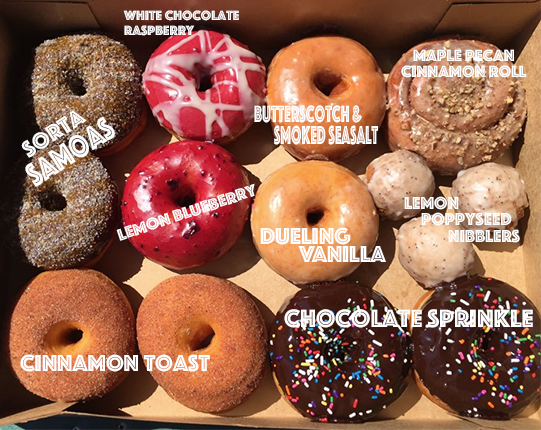Water World

In the Cooper River, you have to monitor a depth gauge all the way to the bottom; it’s the only way to tell if you’re moving up or down. The blackwater current obscures nearly everything—including the alligators. Luckily they don’t typically dive below the surface of this tidal waterway that meanders from inland South Carolina to the Charleston Harbor. Once you reach the riverbed, you have to pound a stake into the ground to keep from drifting away. Then you can begin searching for sunken treasure—megalodon fossils, prehistoric shark teeth.
Shelby Brown sat by an indoor pool with her wet scuba gear nearby as she explained the challenges and rewards of diving in the Cooper, which is how she plans to spend her Fourth of July holiday weekend. Her curly hair and youthful face call to mind the girl next door, but the heart of an explorer beats inside her. She’s a divemaster at Columbus SCUBA, and she agreed to give me a taste of life beneath the ripples there. The company offers training and certification for self-contained underwater breathing apparatus, better known as scuba diving.
Owners Andy and Melissa Silverman became a couple via scuba—Andy was an instructor and Melissa was a student. According to Andy, she insisted that she failed the first time she attempted his course so she had to take it again, and then she decided they should travel to Roatan, Honduras, for her open-water checkout dives to become certified. They’ve been together ever since. They met Brown on Andros Island in the Bahamas, and she was instantly hooked on the submerged recreation. Upon graduation from Hocking College with degrees in wildlife management and ecotourism and adventure travel, she moved to Columbus to work for the couple’s company.
Diving boasts a bold culture, and the attitude of its proponents is inquisitive and enthusiastic. A look at the Columbus SCUBA website reveals a roster of explorers: flight instructor, archaeologist, firefighter, ice diver, photographer, and many others—all of them pictured with broad smiles in and out of water. The company works closely with Columbus Fire Dive Rescue, Columbus Police Search and Recovery, and Franklin County Rescue, as well as about 20 other public safety diving teams around the state.
So how does an Ohio-bred landlubber go about becoming a divemaster? Well, first you need to dip your toes in the water.
“It’s easier than people think,” Brown said. “It seems like this intimidating thing until you get into the water, and you realize all you have to do is breathe.” The training process to get certified involves one class a week for four weeks. Students learn to dive and use the equipment in a controlled indoor pool before venturing to open water.
Mastering the technical requirements is paramount, and there may be no better trainer around than Andy. His credentials include some of the highest honors available, like the PADI Elite 300 instructor award and the Platinum Pro 5,000 Diver award, shared by Jacques Cousteau, the father of modern scuba diving. If there is someone you want repairing your life-support gear, or leading your first scuba trip abroad, it’s Andy. His workshop is a perfectly organized array of alien tools and parts he uses to fix or fashion anything—anything—one could conceivably need for a dive. The equipment resembles what an astronaut would don for a walk on the moon. And for good reason—an underwater excursion is like visiting another planet. The rules change. Gravity relinquishes its hold on you.
“Everything with scuba is slow, relaxed, calm. You don’t want to be floating or sinking, you just want to be weightless,” Brown said. “That’s what people love about scuba; it’s like being in outer space.” Despite my initial jitters—I’m not a strong swimmer—in less than an hour I was in full gear doing a handstand under 12 feet of water. Everything Brown claimed about the total freedom of a zero-gravity atmosphere is true.
After the indoor immersion and classes are complete, it’s time for the final test: the open-water checkout dive. The Columbus SCUBA team travels to Circleville or to a flooded quarry in Gilboa near Findlay for checkouts almost every weekend. There are meetings, then instructor-led, small-group dives to practice skills in open water, and then mandatory dives to achieve certification. But the atmosphere is more communal than official. “We live together, we dive together, we have bonfires,” Brown said. “It’s a whole community; it’s like a family.”
Once certified, the world becomes a diver’s oyster. Columbus SCUBA runs trips year-round to locations like the Philippines, the Caribbean, the Bahamas, the Virgin Islands, and Mexico. In October, the company brought 94 people to the island of Bonaire in the former Netherland Antilles off the coast of Venezuela. Even if divers don’t want to travel far, the options close by are surprising, including Columbus SCUBA’s home away from home in Gilboa. “It’s got a school bus sunk in there, it’s got an airplane, a helicopter,” Brown said. “They have 10 paddle fish in there about five feet long.” [Ed. note: Google these creatures—they are amazing.]
As we sat near the pool discussing the path to certification and the unearthly adventures beyond, Brown related stories of her underwater escapades. In February, she explored the Bonne Terre mine near the Mark Twain National Forest, about an hour south of St. Louis.
“It’s an old, flooded lead mine. It’s five levels, super cool. The water is constantly 54 degrees,” she said. “You walk down the stairs to this cave and there’s a dock, and when you jump in, the visibility’s great. You can see 100 feet in every direction. There are these big rock columns with tunnels you can go through. It’s like swimming through Swiss cheese.”
Like discovering another world, just below the surface. •
Columbus SCUBA is located at 4680 Indianola Ave. For more, visit columbusscuba.com.
BROUGHT TO YOU BY


